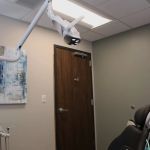Understanding Gum Disease
Gum disease, also known as periodontal disease, is a common oral health issue that can have significant implications if left untreated. It affects the gums and the bone that supports the teeth. Poor oral hygiene is a major contributor, but genetics and certain health conditions can also increase the risk.
Symptoms of Gum Disease
The symptoms of gum disease can vary depending on the stage of the disease. In the early stages, such as gingivitis, you might notice reddish or purplish gums that bleed easily when brushing or flossing. Other symptoms could include soreness, bad breath, an unpleasant taste, pain when chewing, gum recession, loose teeth, or a change in the way the teeth fit together. As the disease progresses to more advanced stages, the complications can become more severe, potentially leading to tooth loss.
Causes and Risk Factors
The main cause of gum disease is the buildup of dental plaque, which contains various types of bacteria. Risk factors include smoking, poor oral hygiene, diabetes, autoimmune diseases, hormonal changes, stress, genetics, and heart disease. The bacteria that cause gum disease can be passed from person to person through prolonged contact with saliva.
Diagnosis of Gum Disease
Dentists can diagnose gum disease during a routine examination by looking for plaque buildup and asking about symptoms. They may measure the pockets around the teeth using a periodontal probe and take dental X-rays to assess the extent of bone loss. Referral to a periodontist might be necessary for a more detailed evaluation and treatment plan.
Treatment Options
While gum disease isn't curable, it is manageable. Early-stage gum disease (gingivitis) can often be reversed with regular dental cleanings and improved oral hygiene. For more advanced cases, treatments such as scaling and root planing, pocket reduction surgery, bone grafting, gum grafting, guided tissue regeneration, and the use of platelet-rich fibrin or plasma may be recommended. The choice of treatment depends on factors like the severity of the disease, overall health, smoking status, and previous treatments.
Prevention of Gum Disease
Preventing gum disease is possible for most people through consistent and proper oral hygiene. This includes brushing teeth two to three times a day, flossing daily, using an antibacterial mouthwash, avoiding smoking and tobacco use, and visiting the dentist for regular cleanings and exams. For those with a higher risk due to genetics or other conditions, more frequent cleanings with a dental hygienist may be necessary.
Outlook and Prognosis
Gum disease is not life-threatening but can lead to other health problems if the infection spreads. With early detection and appropriate treatment, it is manageable, and the risk of tooth loss can be reduced. However, it's important to be vigilant about oral health and seek treatment promptly if any symptoms arise.
Living with Gum Disease
If you notice symptoms like bleeding, tender, or swollen gums, it's essential to see a dentist promptly. Early detection is crucial for effective treatment. If referred to a periodontist, it's helpful to have questions prepared, such as the stage of the disease, the type of treatment needed, recovery time, and follow-up care.
In conclusion, gum disease is a significant oral health concern that requires attention. By being aware of the symptoms, causes, and prevention methods, as well as seeking appropriate treatment when necessary, you can take control of your oral health and minimize the risks associated with gum disease. Maintaining good oral hygiene and regular dental visits are key to keeping your gums and teeth healthy and preventing the progression of this potentially damaging condition.






 Community Health Care Hilltop Family Dental Clinic3.0 (188 review)
Community Health Care Hilltop Family Dental Clinic3.0 (188 review) Valleywise Community Health Center - Avondale4.0 (343 review)
Valleywise Community Health Center - Avondale4.0 (343 review) Peninsula Family Dentistry5.0 (193 review)
Peninsula Family Dentistry5.0 (193 review) Britely Dentures + Implants Studio4.0 (165 review)
Britely Dentures + Implants Studio4.0 (165 review) Spring Valley Dental Care4.0 (530 review)
Spring Valley Dental Care4.0 (530 review) Center City Dental4.0 (605 review)
Center City Dental4.0 (605 review) The Importance of Oral Health Education During Pregnancy for a Healthy Pregnancy
The Importance of Oral Health Education During Pregnancy for a Healthy Pregnancy Best Tips for Brushing Your Teeth Properly for Healthy Gums: Essential Techniques for Oral Health
Best Tips for Brushing Your Teeth Properly for Healthy Gums: Essential Techniques for Oral Health Why Skipping Dental Checkups Can Lead to Bigger Oral Health Problems
Why Skipping Dental Checkups Can Lead to Bigger Oral Health Problems Advantages of Porcelain Dental Restorations
Advantages of Porcelain Dental Restorations How Can Diabetes Cause Tooth and Gum Problems? Preventing and Managing Oral Health Issues
How Can Diabetes Cause Tooth and Gum Problems? Preventing and Managing Oral Health Issues Healthy Habits for Promoting Good Oral Health and Hygiene: Tips for a Healthy Smile
Healthy Habits for Promoting Good Oral Health and Hygiene: Tips for a Healthy Smile